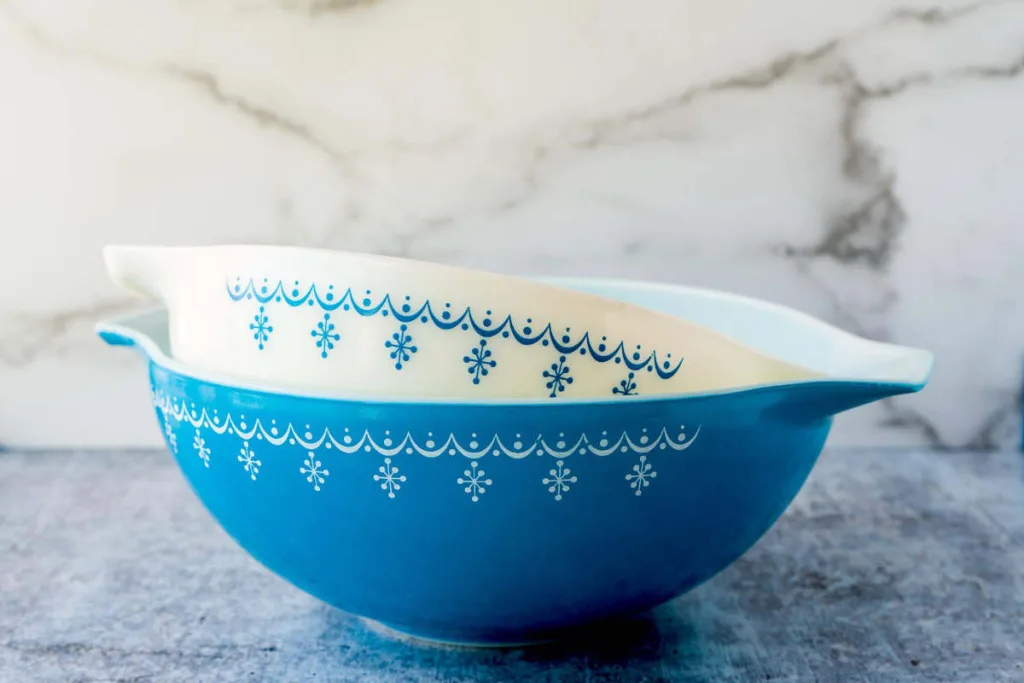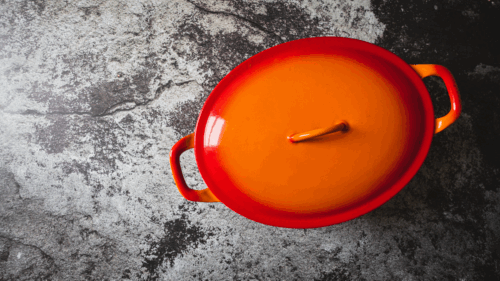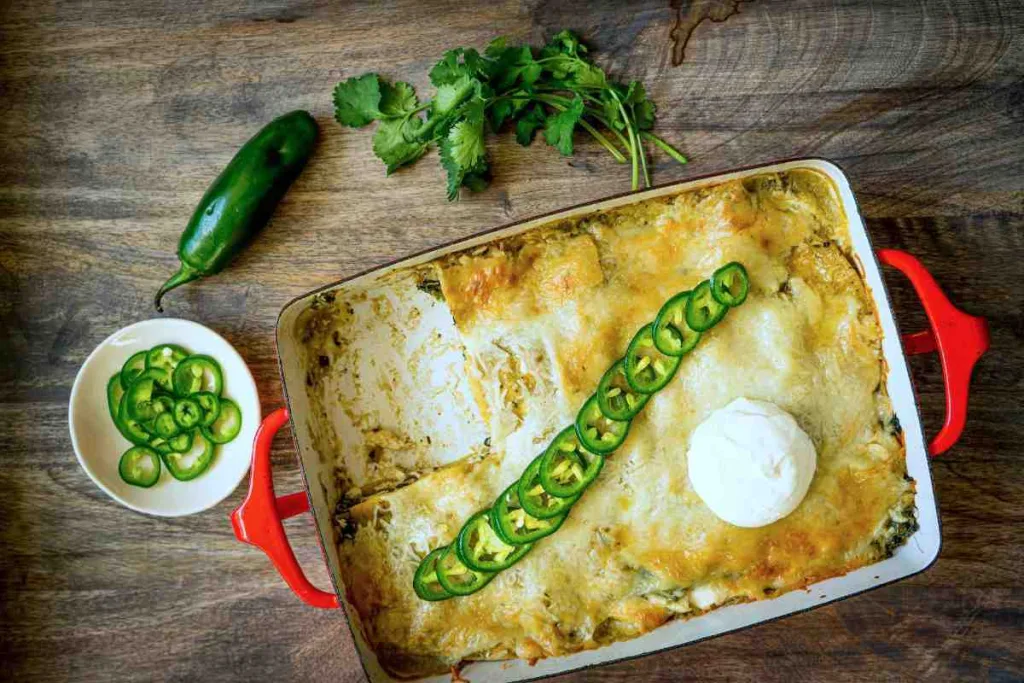My love of vintage cookware started when we cleaned out my mom’s condo after she died, sorting through what to keep and what to give away. Before that, honestly, I didn’t really care much about “old shit.”
But in a rare fit of sentimentality, there I was, snagging things from her kitchen. It was an odd thing to latch onto, considering she was a reluctant cook with a limited repertoire.
Still, I decided I had to have the ‘60s-era red-gingham bound Better Homes and Gardens New Cookbook and a green spiral notebook tracing her occasional culinary whims of the 1970s and ‘80s. It was filled with recipes jotted down in her neat Palmer Method handwriting or clipped from the newspaper, sometimes taped to its pages or, more often, just randomly stuffed in there. I packed up the Christofle silverware that we still use every day.
I snagged the large yellow Pyrex bowl that my father had brought to their marriage. It had certainly started life as the largest in the iconic set of colored nesting bowls to wind up in my childhood kitchen and used to mix Toll House cookie dough and Thanksgiving stuffing.
I also couldn’t resist the ancient harvest gold Bundt pan that she used to bake her Sour Cream Coffee Cake.
And there was the flame-red 4-quart Dutch oven that I don’t really remember her using much at all. But it was a pretty, good-quality piece that I figured would look nice in my own kitchen.
Check out Alton Brown’s favorite vintage gear >>
I had these things shipped to my house, unpacked them and pressed them into service — certainly more than they’d been used in their previous home.
Vintage cookware like this is stashed away in kitchens all over the country. They turn up at garage sales, and they’re a mainstay of vintage stores, eBay and Etsy. I love them for their nostalgic charm, durability and, depending what you buy, affordability.
Here are some of my favorites:

Vintage Pyrex
Old-school Pyrex bowls and storage pieces are a hot item for collectors and cooks alike. And for good reason – these hardworking pieces have held up through decades of use. I picked up these nesting spouted bowls (with a matching refrigerator container!) at a vintage store in Healdsburg, Calif., several years ago. Little did I know I’d be using them almost daily, thanks to the integrated handle and spout.
Pyrex produced these from the 1940s until the ‘80s in a massive array of patterns. These are Snowflake, from the ‘70s. Pink Daisy, which makes many cameos in The Marvelous Mrs. Maisel, is especially coveted. Prices for these pieces have climbed steadily as demand rises.
Good-Deal Dutch Ovens
A solid Dutch oven can be a serious investment — a new one from Le Creuset can set you back $400. But used pieces will save you a lot of dough, making them particularly valuable vintage cookware.
When I wanted a larger version of my mom’s long-discontinued Belgian-made enameled cast-iron Descoware Dutch oven, a quick eBay search led me to a 7-quart, mint-condition beauty. The total, with shipping, was a mere $70. And I scored this 5-quart oval Descoware piece at a vintage store. Priced at $75 and in perfect condition — it looked like it had been used maybe once, ever — I couldn’t leave it behind.
(Fun fact: Julia Child popularized Descoware in the 1960s, and there’s even a Descoware bean pot on the stove of her kitchen in the Smithsonian.)
If you’re considering a vintage Dutch oven, especially one that’s enameled cast iron, inspect it thoroughly inside and out. Skip pieces with scratched, chipped or cracked enamel.

Use your Dutch oven to make this easy no-knead bread>>

Dansk Kobenstyle – sleek, lightweight midcentury Danish modern, enameled-steel cookware – has become so popular that the company has reissued the stuff.
Get the recipe for this Chicken Enchilada Casserole >>
But you also can find affordable vintage versions in a variety of bright colors (Chinese red, turquoise, mint green, yellow) in vintage shops and online, where you’ll find casserole dishes, paella pans, Dutch ovens, skillets and more.

When I visited Ina Garten’s famous “barn” in the Hamptons to interview her for Parade Magazine, I had plenty of time to check out her kitchen. It’s a camera-ready and hardworking space — only items that she actually uses earn a spot. One item that caught my eye: a jar of vintage spoons standing at the ready for her to taste recipes on the fly. “I got them at a flea market,” she told me. “They have bundles of spoons and they’re inexpensive and they’re great!”
Discover other must-have equipment in Ina Garten’s kitchen>>
